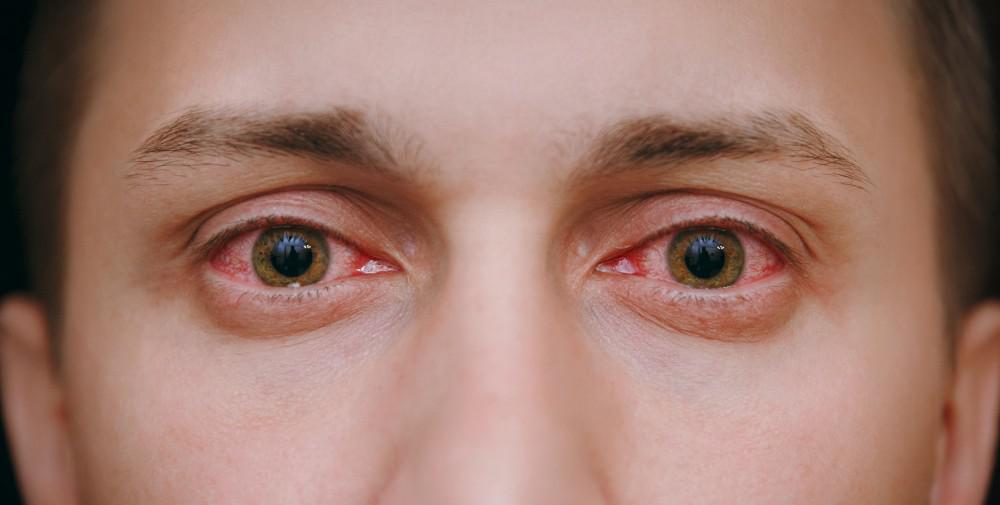 " title="Bloodshot Eyes Should you be worry
" decoding="async" srcset="https://www.medrot.com/wp-content/uploads/2022/08/Bloodshot-Eyes.jpeg 1000w, https://www.medrot.com/wp-content/uploads/2022/08/Bloodshot-Eyes-300x152.jpeg 300w, https://www.medrot.com/wp-content/uploads/2022/08/Bloodshot-Eyes-768x388.jpeg 768w" sizes="(max-width: 1000px) 100vw, 1000px" />
" title="Bloodshot Eyes Should you be worry
" decoding="async" srcset="https://www.medrot.com/wp-content/uploads/2022/08/Bloodshot-Eyes.jpeg 1000w, https://www.medrot.com/wp-content/uploads/2022/08/Bloodshot-Eyes-300x152.jpeg 300w, https://www.medrot.com/wp-content/uploads/2022/08/Bloodshot-Eyes-768x388.jpeg 768w" sizes="(max-width: 1000px) 100vw, 1000px" />Redness of the eye, also called bloodshot eyes, can indicate the presence of several different health problems. While some of these problems are benign, others are serious and require immediate medical attention.
Eye redness may be a cause for concern. However, the most serious eye problems occur when you have redness along with pain or changes in your vision.
Below we will explore the different causes of red eyes, how they are treated, and when it is a good idea to contact a doctor.
What are the common causes of red eyes?
Now let’s look at the various causes of red eyes. For each, we’ll cover what it is, what causes it, and other additional symptoms you need to be aware of.
Table of Contents
Allergy
Allergies can affect the eyes, causing them to become red and swollen. Other symptoms you may experience include:
- itch
- burning sensation
- increased lacrimation
Eye allergy symptoms can also be accompanied by other allergy symptoms, such as sneezing and itching, runny nose.
Some common allergy triggers include:
- pollen
- mites
- mold
- pets
- irritants such as cigarette smoke or polluted air
Dry eyes
Tears are made by small glands above the eyes. They help protect and lubricate the eyes. You have dry eyes when your eyes don’t produce enough tears.
Dry eyes are very common, with studies estimating prevalence rates between 5 and 50 percent. This condition is more common in women, people over the age of 50, and individuals who wear contact lenses.
If you have dry eyes, you may notice that your eyes appear red. Other symptoms include:
a stinging, scratching, or burning sensation
feeling like you have something in your eye
sensitivity to light
blurred vision (which comes and goes, especially when reading)
Conjunctivitis
Conjunctivitis occurs when the membrane covering the inside of the eyelids and the white part of the eye, called the conjunctiva, becomes inflamed. This condition is also called pink eye.
Conjunctivitis causes the whites of the eyes to be pink or red. Some other symptoms that can occur with conjunctivitis are:
- itch
- burning sensation
- feeling like you have something in your eye
- increased lacrimation
- a discharge of mucus or pus that can lead to crusting on the eyelids or eyelashes
Conjunctivitis can have a variety of causes, including:
- viral infections such as those caused by adenoviruses, measles, or COVID-19
- bacterial infections, which may be caused by species such as Staphylococcus aureus, Streptococcus pneumoniae, or Haemophilus influenzae
- allergies to things like pollen, mold, and pet dander
- environmental irritants such as smoke or chemical fumes
Conjunctivitis caused by a viral or bacterial infection is highly contagious. This means that it can easily spread from one person to another.
Blepharitis
Blepharitis is when your eyelids become inflamed. It can make your eyelids or eyes red and swollen.
Some other symptoms of blepharitis are:
- itch
- burning or stinging sensation
- feeling like you have something in your eye
- increased lacrimation
- crusted eyelids in the morning
- sensitivity to light
It is also possible for blepharitis to cause more severe symptoms, especially if left untreated. These can include things like loss of eyelashes, eyelashes that grow in the wrong place, or blurred vision.
Blepharitis can occur if you have a lot of bacteria on your eyelids. This condition can also develop if the oil glands in your eyelids become blocked. A mite infestation can also cause blepharitis in rare cases.
Uveitis
Uveitis is inflammation that occurs in the middle part of your eye, called the uvea. The uvea is the area between the white of the eye and the retina.
Inflammation caused by uveitis can lead to red eyes. Other symptoms to look out for are:
- blurred vision
- eye pain
- eye floaters
- sensitivity to light
There are several known causes of uveitis, including:
- autoimmune diseases such as lupus, rheumatoid arthritis, and ulcerative colitis
- certain types of infections, including syphilis, shingles, and toxoplasmosis
- certain types of cancer, such as lymphoma
- herpes simplex virus (HSV) type 1
Early treatment of uveitis is vital. This is because the condition can lead to vision loss if left untreated.
Scleritis
Scleritis is when inflammation affects the white of your eye, which is called the sclera. When this happens, the white of the eye can become red and swollen. Other symptoms may be:
- increased lacrimation
- eye sensitivity or pain
- blurred vision
- sensitivity to light
- headache, face or jaw pain
- reduced vision
The development of scleritis is often associated with an autoimmune disease.
Examples:
- rheumatoid arthritis
- lupus
- Sjögren’s syndrome
- inflammatory bowel diseases such as ulcerative colitis or Crohn’s disease
It is also possible for scleritis to occur as a result of an eye injury or eye infection.
Subconjunctival hemorrhage
Sometimes a blood vessel in the eye may burst and bleed onto the surface of the eye. This is called a subconjunctival hemorrhage.
The condition may appear serious, but is often benign and resolves on its own within 1 to 2 weeks. Typically, redness in the affected eye is the only symptom, although in some cases your eye may feel slightly irritated.
However, if you have subconjunctival bleeding and impaired vision, consult your doctor.
Some potential causes of subconjunctival hemorrhage are:
- rub your eyes a lot
- intense coughing or sneezing
- vomiting
- eye injury
You may be more prone to this condition if you take blood thinners or have diabetes or hypertension.
Eyelid style
A stye is a blockage of the meibomian gland in the eye that causes inflammation. It can affect the outside or inside of the upper or lower lid.
If you have a style, the area around the edge of your eyelid may become red, swollen, and painful. The affected area can fill with meibum (due to a blocked gland) and can potentially grow to the size of a pea.
Angle-closure glaucoma
Glaucoma is a condition where the pressure in your eye increases because the eye produces more fluid than normal. This can damage your optic nerve, which can lead to vision loss.
There are different types of glaucoma. One type, called angle-closure glaucoma, causes a rapid rise in eye pressure. You may also see this type of glaucoma called angle-closure glaucoma or narrow-angle glaucoma.
Symptoms of angle-closure glaucoma appear suddenly and may include redness of the eyes. Other symptoms to be aware of are:
- intense pain in the eye
- see rainbow-colored rings or halos
- blurred vision
- reduced vision
- headache
- nausea or vomiting
Angle-closure glaucoma occurs when your iris blocks the area where eye fluid drains.
Call your doctor if you have red eyes along with:
- Sudden change in vision
- Sensitivity to light
- Sudden halos around lights
- Severe headache, eye pain, or fever
- Nausea or vomiting
- Something in your eyes
- Edema
- Inability to keep eyes open




